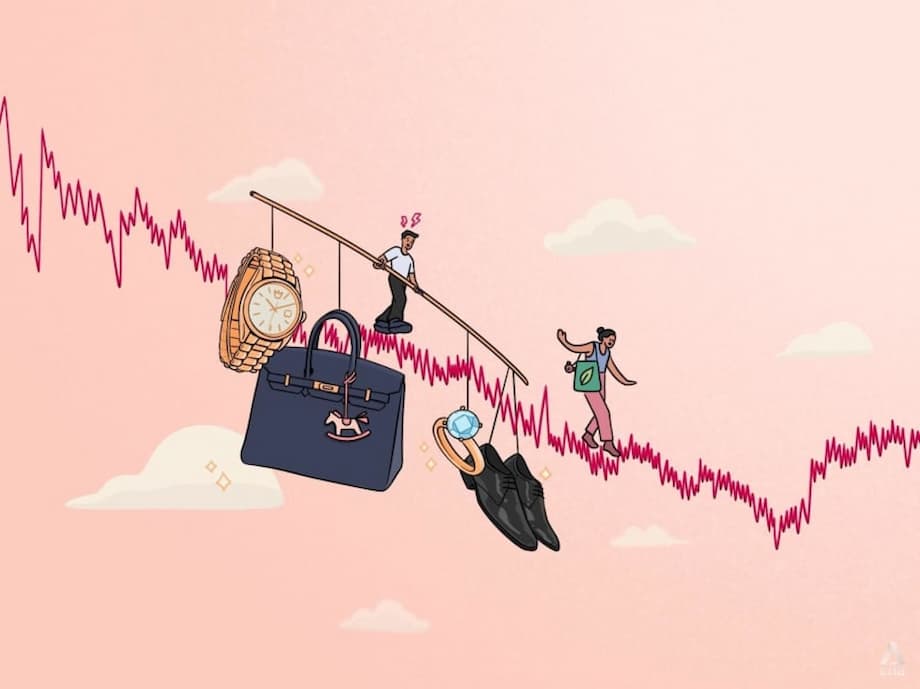Southeast Asia’s Luxury Boom: A Bright Spot Amid Global Slowdown
As luxury markets in China, the United States, and Europe face their steepest downturn in over 15 years, Southeast Asia is emerging as a rare beacon of growth and optimism. While inflation, economic uncertainty, and shifting values have dampened luxury spending in traditional strongholds, cities like Singapore, Bangkok, and Ho Chi Minh City are witnessing a surge in high-end consumption. What’s driving this resilience? The answer lies in a potent mix of rising affluence, booming tourism, generational shifts, and a redefinition of what luxury means for the region’s consumers.
- Southeast Asia’s Luxury Boom: A Bright Spot Amid Global Slowdown
- Global Luxury in Transition: From Slump to Southeast Asian Surge
- What’s Fueling Southeast Asia’s Luxury Resilience?
- Generational Shifts: How Gen Z and Millennials Are Redefining Luxury
- Luxury Retail and Real Estate: The Rise of Experiential and Branded Spaces
- Luxury Categories: Fashion, Watches, Jewelry, and Beyond
- The Digital Edge: E-Commerce, Influencers, and the Resale Revolution
- Challenges and Nuances: Not All Segments Are Immune
- How Luxury Brands Are Adapting: Strategies for the New Southeast Asian Consumer
- In Summary
Global Luxury in Transition: From Slump to Southeast Asian Surge
The global luxury sector has entered a period of correction. According to Bain & Company, worldwide luxury spending dipped slightly in 2024, with personal luxury goods contracting for the first time in 15 years (excluding the pandemic years). China, once the engine of luxury growth, has slowed sharply due to a property slump and changing consumer attitudes. In the West, high living costs and economic anxiety have made buyers more cautious, with many turning away from overt displays of wealth.
Yet, as the world’s luxury giants report disappointing earnings, Southeast Asia stands out. The region’s luxury goods market is projected to reach US$18.4 billion in 2025, with annual growth rates outpacing most other emerging markets. Singapore, in particular, is expected to see luxury sales rise by 7% to S$13.9 billion ($10.9 billion) this year, surpassing regional shopping hubs like Japan, China, and South Korea. Thailand’s luxury sector has grown over 400% from 2020 to 2023, and Vietnam’s market is rapidly expanding with flagship stores from major brands.
What’s Fueling Southeast Asia’s Luxury Resilience?
Several factors set Southeast Asia apart from the global luxury slowdown:
- Rising Affluence and Wealth Creation: The region is home to a burgeoning middle and upper class. Singapore alone boasts over 240,000 millionaires, a 64% increase over the past decade. Economic expansion across Indonesia, Vietnam, Malaysia, and the Philippines is creating new pools of high-net-worth individuals eager to spend on luxury goods and experiences.
- Booming Tourism: International tourists, especially from China and neighboring Asian countries, are flocking to Southeast Asian cities. Singapore and Bangkok have become luxury shopping destinations, with malls like Marina Bay Sands and Iconsiam offering world-class retail experiences. Tourists often seek out luxury goods as part of their travel experience, boosting local sales.
- Intentional and Experiential Consumption: Unlike the status-driven luxury purchases of the past, today’s Southeast Asian consumers are more intentional. They seek emotional connection, personal milestones, and meaning in their purchases. This shift is particularly pronounced among younger buyers, who value authenticity, sustainability, and unique experiences over mere brand prestige.
- Digital Savvy and Influencer Culture: With a youthful, digitally engaged population, Southeast Asia is fertile ground for luxury brands leveraging social media, e-commerce, and influencer partnerships. Local celebrities and digital creators are shaping luxury narratives and democratizing access to aspirational lifestyles.
Generational Shifts: How Gen Z and Millennials Are Redefining Luxury
The definition of luxury is evolving rapidly, driven by the values and preferences of Gen Z and millennials. In Southeast Asia, these generations are less interested in conspicuous consumption and more focused on self-expression, sustainability, and community. According to research from WGSN and Jing Daily, Gen Z in Asia is moving away from traditional “flex culture” and embracing a new form of luxury that prioritizes experiences, authenticity, and regional identity.
Fandoms and tight-knit communities around brands, celebrities, and interests are becoming powerful market forces. Limited-edition collaborations, pop-up events, and immersive brand activations are more appealing than logo-heavy products. Regional pride is also on the rise, with younger consumers expecting brands to celebrate local culture and heritage rather than imposing a one-size-fits-all global approach.
The Four Emerging Codes of Luxury in Southeast Asia
Recent analysis identifies four “codes” shaping luxury consumption in the region:
- Selfhood: Personal expression and authenticity are paramount. Consumers seek brands that enable self-exploration and individuality.
- Legacy: Cultural heritage and social impact matter. Tradition, community, and responsible practices are valued alongside craftsmanship.
- Betterment: Personal growth, well-being, and pragmatic luxury integrated into daily life are increasingly important.
- PlayFullness: Indulgence, adventure, and leisure drive demand for unique experiences and exclusive hobbies.
Luxury Retail and Real Estate: The Rise of Experiential and Branded Spaces
Luxury in Southeast Asia is no longer confined to goods—it’s about experiences and spaces. The region is seeing a boom in luxury malls, branded residences, and experiential retail. In Thailand, Siam Piwat’s portfolio of malls (including Siam Paragon and Iconsiam) has transformed Bangkok into a luxury shopping mecca, hosting major brand events and exclusive collaborations. Iconsiam alone plans to double its luxury brand space, reflecting surging demand.
Singapore’s retail landscape is equally dynamic. The Shoppes at Marina Bay Sands, for example, offers VIP shoppers personalized styling sessions and first looks at unreleased luxury launches. The city-state’s stable economy, liberal immigration policies, and absence of wealth taxes have made it a magnet for wealthy individuals and a testing ground for global luxury brands.
Branded Residences and Luxury Real Estate
The luxury real estate market is also thriving. Thailand leads the region in branded residences—luxury homes managed by global hotel brands—offering exclusivity and hotel-style services. Projects like Porsche’s residential tower in Bangkok and high-end developments in Phuket and Ho Chi Minh City are attracting both local and international buyers. Singapore remains a top destination for Asian investors seeking second homes, with prime properties in demand despite high prices.
Sustainability is increasingly important in luxury real estate, with 75% of ultra-high-net-worth individuals seeking eco-friendly homes. Turnkey rental programs and professional management appeal to those seeking both lifestyle and investment returns.
Luxury Categories: Fashion, Watches, Jewelry, and Beyond
Fashion remains the largest segment of Southeast Asia’s luxury market, projected to reach US$5.79 billion in 2025. Beauty, jewelry, and bags are also popular, with high-quality products, longevity, and uniqueness cited as key purchase drivers. The luxury watch and jewelry markets are evolving, with younger and more diverse buyers entering the scene. Brands are responding by creating emotionally resonant experiences, focusing on transparency, sustainability, and local cultural connections.
International brands are increasingly tailoring their offerings to Southeast Asian tastes. For example, Vessira, a Shanghai-rooted luxury furniture brand blending Italian craftsmanship with Asian aesthetics, is targeting expansion in Indonesia, Singapore, and Thailand. Such cross-cultural collaborations reflect the region’s appetite for design-led, sustainable luxury that resonates with local identity.
The Rise of Experiential Luxury
Experiential luxury is gaining ground, with consumers seeking memorable moments over material possessions. Luxury train journeys, such as Belmond’s Eastern & Oriental Express, offer immersive travel experiences that combine fine dining, wellness, and storytelling. These journeys are not just about transportation—they are curated experiences where retail, hospitality, and culture intersect. Pop-up events, exclusive brand activations, and loyalty rewards are becoming standard as brands strive to create lasting emotional connections with consumers.
The Digital Edge: E-Commerce, Influencers, and the Resale Revolution
Southeast Asia’s young, digital-savvy population is driving a shift to online luxury shopping. E-commerce platforms like Zalora are gaining traction, and online sales are expected to account for nearly 10% of luxury revenue in the region by 2025. Social media influencers and local celebrities play a crucial role in shaping trends and introducing new brands to younger audiences. Thai celebrities, in particular, have become influential brand ambassadors, helping luxury brands reach both local and regional markets.
The resale market is also booming, reflecting a broader shift toward mindful consumption. Gen Z and millennials are driving demand for pre-owned goods, valuing sustainability and the unique stories behind each item. This trend is reshaping the luxury landscape, with brands and platforms offering authenticated resale options and circular economy initiatives.
Challenges and Nuances: Not All Segments Are Immune
Despite the region’s overall resilience, not every luxury segment is thriving. German carmakers like BMW and Mercedes-Benz have seen their market share decline in Southeast Asia, facing stiff competition from Chinese electric vehicle brands. In Singapore, for example, Chinese automaker BYD overtook Toyota as the most popular car brand in 2023. However, analysts note that Chinese brands primarily target the mass market, while German brands retain their niche among affluent buyers. The broader automotive market in Thailand has also contracted, reflecting economic headwinds that affect all segments.
Regulatory hurdles, political instability, and currency fluctuations pose additional challenges for luxury brands operating in Southeast Asia. Property ownership laws for foreigners and the need to adapt to local tastes and values require careful navigation. Nevertheless, the region’s long-term potential remains strong, supported by a young population, growing middle class, and its role as a gateway to the Asia-Pacific.
How Luxury Brands Are Adapting: Strategies for the New Southeast Asian Consumer
To succeed in Southeast Asia’s dynamic luxury market, brands are rethinking their strategies. Key approaches include:
- Personalized Engagement: Brands are investing in immersive experiences, pop-up events, and collaborations with local artisans to create emotional resonance and cultural relevance.
- Digital Innovation: Leveraging e-commerce, social media, and even the metaverse, brands are reaching younger consumers where they spend their time.
- Sustainability and Transparency: Responding to consumer demand for ethical practices, brands are focusing on sustainable sourcing, circular economy initiatives, and transparent storytelling.
- Balancing Exclusivity and Accessibility: While maintaining brand integrity, luxury houses are broadening their appeal through limited-edition releases, loyalty programs, and tailored experiences that make luxury feel both special and inclusive.
As Caroline Murphy, president of sales and business relations at Siam Piwat, explained in an interview, “Our strategy is to ensure every partner delivers a one-of-a-kind experience, making our properties the ultimate expression of each brand.” This focus on experience, community, and innovation is setting the tone for the future of luxury in Southeast Asia.
In Summary
- Southeast Asia is defying the global luxury slump, with robust growth driven by rising affluence, tourism, and intentional consumption.
- Singapore, Thailand, and Vietnam are leading the region’s luxury boom, supported by economic expansion and a growing base of high-net-worth individuals.
- Gen Z and millennials are redefining luxury, prioritizing experiences, authenticity, sustainability, and regional pride over traditional status symbols.
- Luxury retail is evolving, with a focus on experiential spaces, branded residences, and immersive brand activations.
- Digital innovation, influencer culture, and the booming resale market are reshaping how luxury is bought and experienced.
- Not all segments are immune—luxury automotive faces new competition, and brands must navigate regulatory and economic challenges.
- The future of luxury in Southeast Asia will be defined by brands that balance exclusivity with accessibility, champion sustainability, and connect emotionally with a new generation of consumers.




